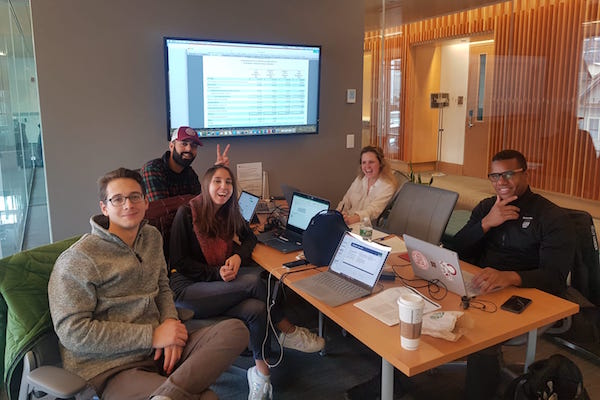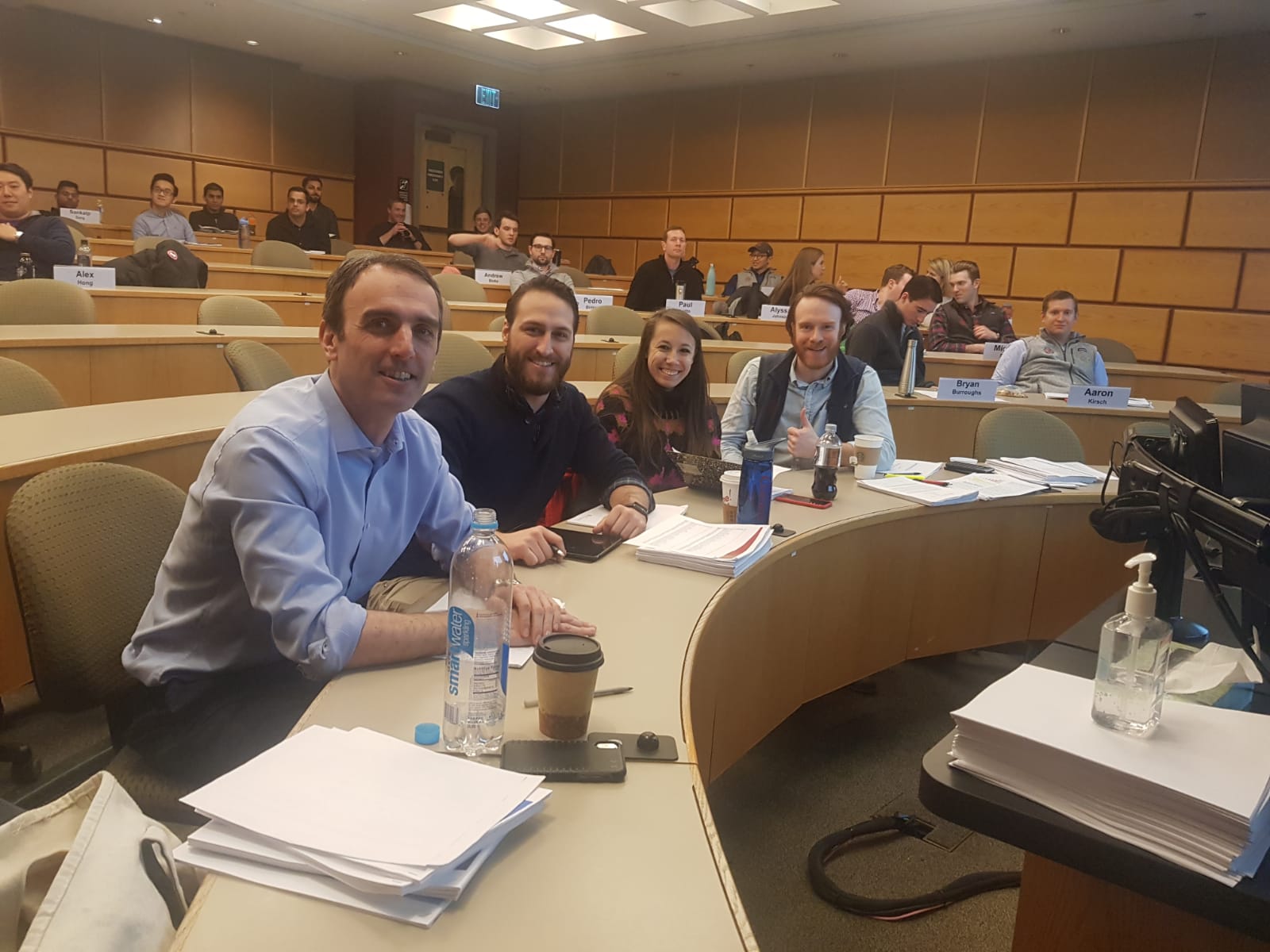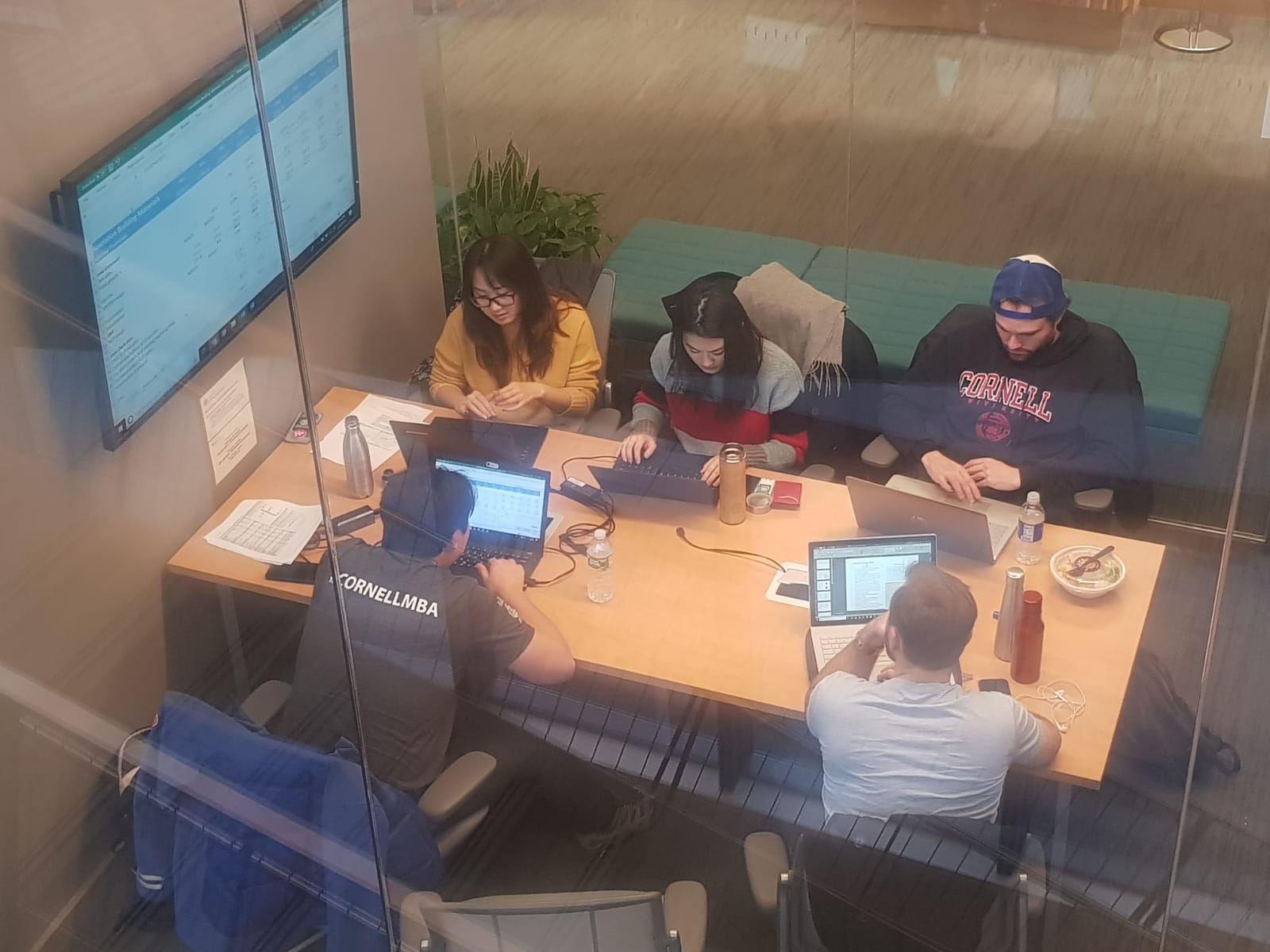IBI case: To LBO or not to LBO, that was the question

By Isabella Marmolejo, Two-Year MBA ’20
All I could think about was the February break trip we had planned with around 40 of my classmates, then, in comes an email from Drew Pascarella, Rempe Wilson Distinguished Lecturer at Johnson, regarding our LBO case. “Your flight and hotel reservations for a week in Costa Rica are confirmed” read the first line of the case. Although the setting of the case was spot-on, in real life we were not flying to Costa Rica, but to New Orleans, and we were equally as excited as the case described us to be. The case also stated that we were to prepare an LBO transaction analysis for Foundation Building Materials (FBM) and plan to present it to Christina Park, MBA ’02, managing director in the LevFin group at RBC Capital Markets. The stakes were a lot higher for this case than when we present only for Investment Banking immersion (IBI) students, so we definitely had to bring our A-game for this presentation.
The very first task was to individually create the LBO model. The submission deadline was on a date I was planning to be at Café du Monde eating beignets, so I got right to grinding through the model. Though I did work on deals regarding debt issuances during my time at a private debt fund prior to Johnson, never had I approached a corporate leverage buyout in the U.S. market, much less by myself.
I went back to my recruiting preparation materials to refresh my memory on the most important criteria to evaluate an LBO target:
- steady and predictable cash flows
- cost-cutting opportunities
- mature industry
- strong market position
- feasible exit options
According to my calculations, this company was an attractive target. I felt confident in my assumptions and sent in my model before boarding the flight to New Orleans. So, now I could relax, right? Wrong. As soon as we were back from our break, I got together with my teammates, Rahul, Alexandra, Olivier, and Alexander, to discuss how to tackle this assignment. None of us were 100 percent sure how to approach the narrative, but as this Immersion has taught us, we bounced ideas off each other and eventually came to a consensus. As a team, we decided we were not going to recommend the transaction, and we were ready to defend our assumptions and results. Our model was built with the following values:
- Acquisition premium was 30 percent.
- Financing would be 65 percent debt/35 percent equity.
- Debt would be comprised of a term loan B and a high-yield bond.
- Our entry and exit multiples were calculated at 8.1x.

Our base case results showed an IRR of 17 percent, which was below the 20 percent required ROE for the deal to happen. Additionally, FBM would not have sufficient cash flow to fully repay the term loan B within seven years and/or repay 50 percent of total debt, which was another deal breaker. Based on these results, we were recommending not to purchase FBM.
The day of the presentation had arrived, and right before coming into the classroom we chatted with our fellow IBI classmates and realized that there was an apparent split between groups that suggested FBM was a good LBO candidate and those that did not. I was very curious to see how Drew and Christina would react to the conflicting recommendations from different teams.
As expected, the two teams called to present had opposing approaches to the deal, which made the discussion even more interesting and educational. And, while there is usually no one right answer, Drew’s teaching method ensures that we get enough working hours trying to figure it out by ourselves before he shares his seasoned perspective with us. During the presentation, he asked questions of both teams that required them to defend their recommendation, regardless of how hard he pushed them on it. This unique teaching style appropriately recreates the real-life experiences that lie ahead for all of us going on to an IB desk this summer, as we will most likely have to figure out significant parts of our deliverables on our own or with junior peers, without the full guidance from senior managers.

I have taken the advice given to us by the second-year bankers: To get the full experience of the IBI, first rely on your classmates’ knowledge and then soak in Drew’s approach to every case. As I’ve followed this advice, I have now learned about bonds, IPOs, LBOs, and will soon learn about M&A, FIG, and strategic alternative transactions, all of which are new territory for me and will greatly enhance my knowledge heading into the summer.
About Isabella Marmolejo, Two-Year MBA ’20

Isabella is a first-year MBA candidate at Johnson. Before business school, she worked as a senior investment analyst for Ashmore-CAF AM, a private debt fund focused on investing in infrastructure projects in Colombia. Prior to this, Isabella worked at a boutique investment firm that specialized in project finance deals and completed an internship at the Credit Suisse investment banking office in Bogotá, Colombia. Isabella will be joining the J.P. Morgan Latin America investment banking group during the summer.

Comments